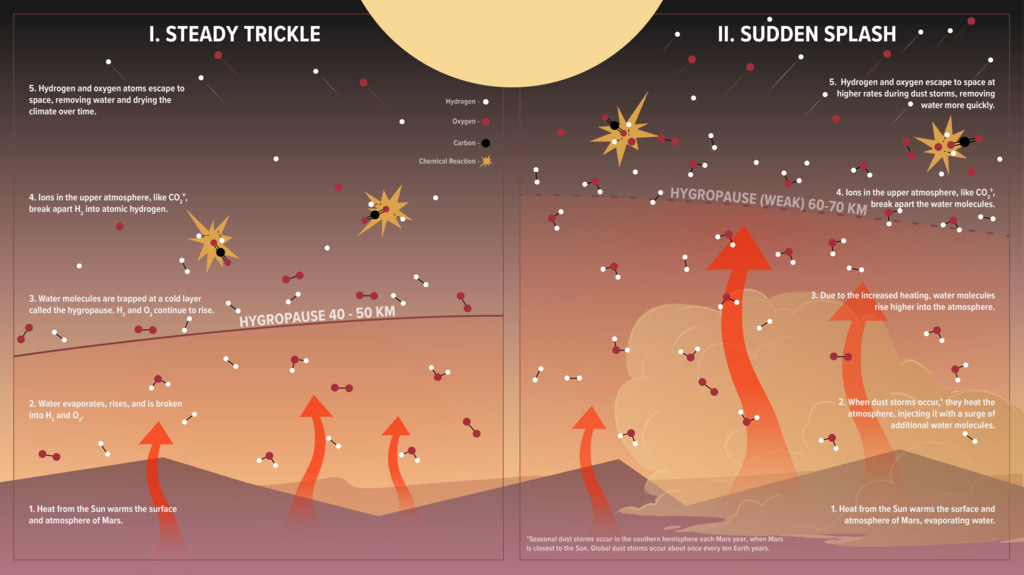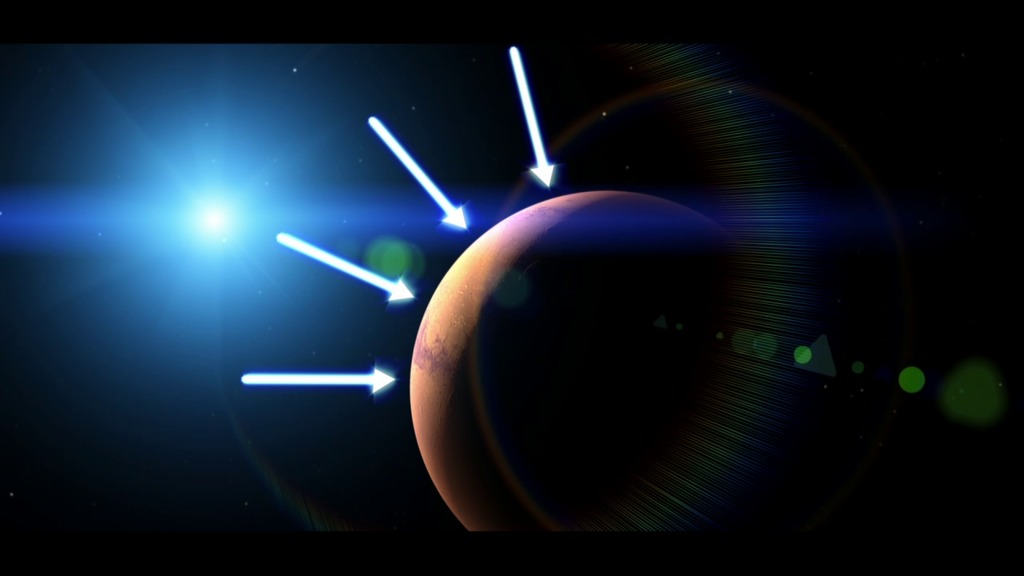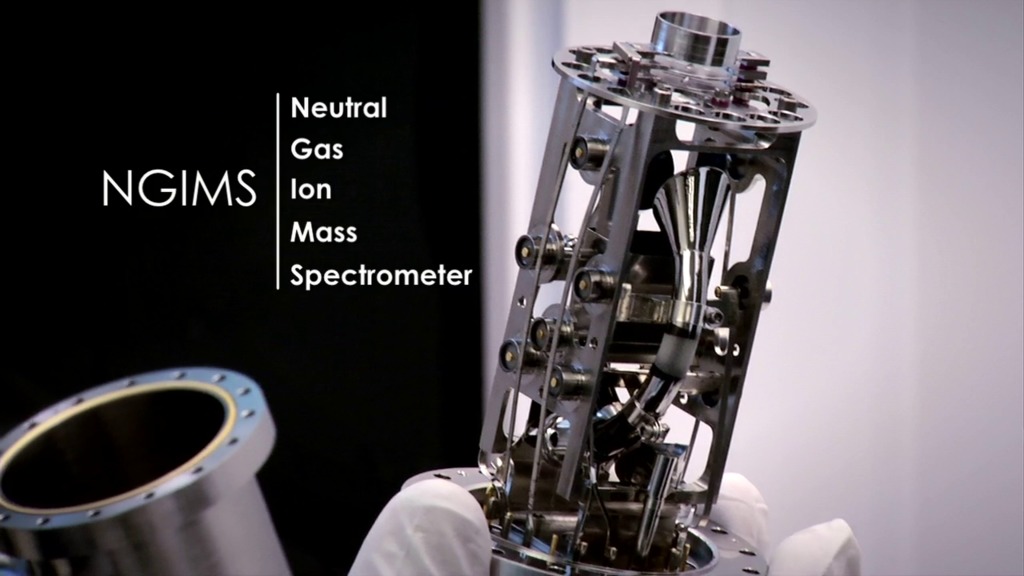MAVEN Reveals Mars Argon Loss to Space

Infographic explaining the MAVEN argon results. Enlarge or click "download" for print-resolution versions. Also available in text-readable PDF for the visually impaired.
Solar wind and radiation are responsible for stripping the Martian atmosphere, according to results from NASA's MAVEN mission. By measuring light and heavy isotopes of argon in the Martian atmosphere, scientists have determined that the majority of the planet's air and water were removed to space by sputtering. In this process, ions from the Mars atmosphere get picked up by the solar wind and slammed into other atoms at the top of the atmosphere, knocking them into space.
Scientists used measurements of light and heavy argon from MAVEN and NASA's Curiosity rover to determine that sputtering has removed 65% of Mars' argon to space, along with the majority of other gases like carbon dioxide. Over billions of years, this transformed Mars from a hospitable environment into the cold, dry planet that we see today.
Learn more about the MAVEN argon loss finding.
Animations of the MAVEN spacecraft, sputtering, and the evolution of the Martian climate. This video file is in the standard NASA-TV broadcast format. Animations begin at 1:36.
For More Information
See NASA.gov
Credits
Please give credit for this item to:
NASA's Goddard Space Flight Center
-
Scientist
- Bruce Jakosky (LASP)
-
Animators
- Lisa Poje (USRA)
- Walt Feimer (KBR Wyle Services, LLC)
- Michael Lentz (USRA)
- Chris Smith (SLAC)
-
Producer
- Dan Gallagher (USRA)
-
Science writer
- William Steigerwald (NASA/GSFC)
-
Support
- Matthew R. Radcliff (USRA)
-
Technical support
- Aaron E. Lepsch (ADNET Systems, Inc.)
Release date
This page was originally published on Thursday, March 30, 2017.
This page was last updated on Wednesday, October 16, 2024 at 12:18 AM EDT.
![During its first decade at Mars, MAVEN has helped to explain how the Red Planet evolved from warm and wet into the cold, dry world we see today. Complete transcript available.Universal Production Music: “Executive Deceit” by Samuel Karl Bohn [PRS], Chalk Music [PRS]; “Quasar” by Ross Stephen Gilmartin [PRS], Chappell Recorded Music Library Ltd [PRS]; “Modular Odyssey” and “Synthology” by Laetitia Frenod [SACEM], Koka Media [SACEM]Watch this video on the NASA Goddard YouTube channel.](/vis/a010000/a014600/a014690/MAVEN-10th-Anniversary-Preview.jpg)






